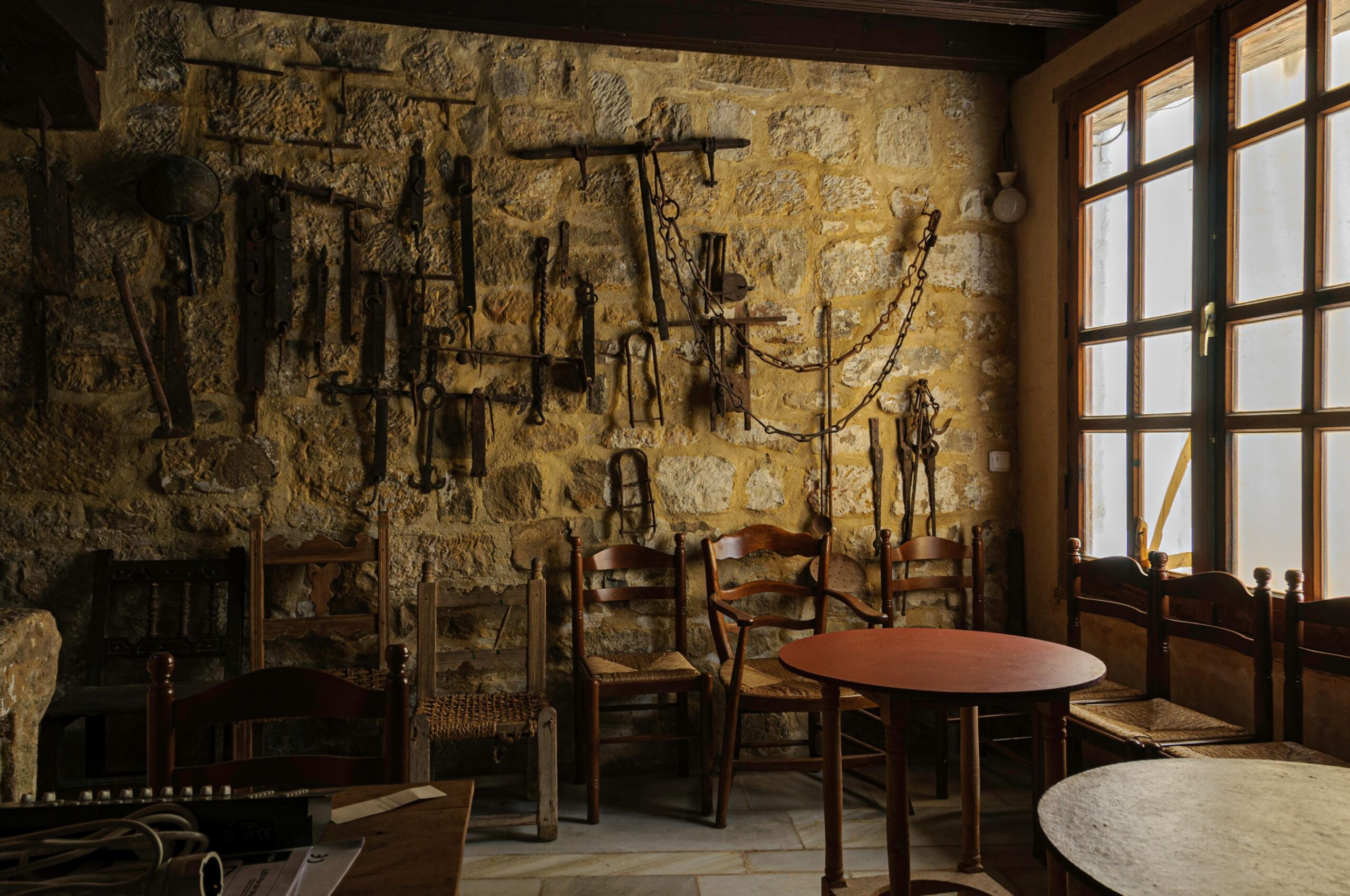Are you ready for a thrilling adventure? If you’ve ever wondered what challenges await you in an escape room, look no further! In this article, we’ll explore the 7 most common puzzles you’re likely to encounter. From deciphering codes to solving riddles, get ready to put your problem-solving skills to the test. Whether you’re a seasoned escape room enthusiast or new to the game, these puzzles are sure to keep you engaged and entertained. So grab your team, sharpen your wits, and let’s dive into the intriguing world of escape room puzzles!
Hidden Objects
Finding hidden objects
In escape rooms, one of the most common types of puzzles is finding hidden objects. This involves carefully examining the room and searching for items that may be hidden in plain sight or cleverly concealed. These objects can be crucial for uncovering clues, solving other puzzles, or unlocking new areas within the room. Pay close attention to every detail, as the key to your escape may be hiding right under your nose!
Solving puzzles to reveal hidden objects
Sometimes, hidden objects are not immediately visible and require solving puzzles to reveal their whereabouts. These puzzles may involve deciphering codes or ciphers, solving mathematical equations, cracking secret codes, or even translating foreign languages. By successfully completing these puzzles, you will uncover hidden objects that can assist you in your escape.
Using hidden objects to unlock new areas or solve other puzzles
Once you have successfully found hidden objects, their purpose extends beyond their mere discovery. In escape rooms, hidden objects often serve as keys to unlock new areas or solve other puzzles. For example, you may find a key hidden inside a book that unlocks a locked drawer, revealing another puzzle or clue. Paying attention to how each hidden object relates to the overall game and thinking creatively about their potential uses will be essential to your escape.
Codes and Ciphers
Decoding messages
Codes and ciphers are a staple in escape room puzzles. Decoding messages involves unraveling secret codes or encrypted messages. This may require you to recognize different cipher systems, such as Caesar ciphers, substitution ciphers, or Vigenère ciphers. By successfully decoding these messages, you can access valuable information or clues that will aid you in your escape.
Solving mathematical equations
Mathematics may not be everyone’s favorite subject, but in escape rooms, it can be the key to freedom! Solving mathematical equations often presents itself as a puzzle within the game. These equations might involve logical reasoning, algebraic manipulations, or geometrical concepts. By successfully solving these equations, you may uncover hidden compartments, open locked doors, or reveal vital clues.
Cracking secret codes
Cracking secret codes can greatly enhance your chances of escaping the room. Escape rooms often incorporate various code systems, including number codes, symbol codes, or even pattern-based codes. By closely examining the provided clues, thinking critically, and applying problem-solving skills, you can crack these secret codes and unlock new paths forward in your escape.
Translating foreign languages
If you’re a language enthusiast, then escape rooms will give you an opportunity to put your language skills to the test! Some puzzles might involve translating foreign languages, where you will need to decipher unfamiliar words or phrases. Knowledge of languages such as Morse code or braille may also be useful in these scenarios. By successfully translating these foreign languages, you can unravel hidden messages or gain access to crucial information.
Using braille or Morse code
In certain escape room scenarios, knowledge of braille or Morse code may prove to be essential. These communication systems can be incorporated into puzzles to provide clues or instructions. Understanding how to read braille or decode Morse code can help you unlock hidden compartments, decipher messages, or trigger mechanisms. Keep an eye out for patterns or unusual dots and dashes that may guide you towards success.

Pattern Recognition
Identifying patterns in images or symbols
Pattern recognition plays a significant role in escape room puzzles. One type of pattern recognition puzzle involves identifying patterns within images or symbols. This could be as simple as matching shapes or colors, or it could require a more complex analysis of patterns and sequences. By successfully identifying these patterns, you can uncover hidden clues or trigger mechanisms that will aid in your escape.
Solving sequences or patterns
Solving sequences or patterns is another common challenge you may encounter in escape rooms. These puzzles often involve numbers, letters, or symbols arranged in a particular sequence or pattern. By carefully analyzing and understanding the logic behind these sequences, you can deduce the missing elements and progress further in your escape.
Matching colors or shapes
Escape rooms frequently utilize color or shape matching puzzles to test your observational skills. These puzzles may require you to match colors or shapes in a given pattern or arrangement. Paying attention to details and ensuring accurate color or shape matching is crucial for progress. Successfully completing these puzzles can unlock new areas, reveal hidden clues, or even uncover hidden objects.
Recognizing audio or visual patterns
Sometimes, puzzles in escape rooms extend beyond written or visual clues and require you to recognize audio or visual patterns. This could involve listening to a sequence of sounds and identifying the correct order or watching a series of flashing lights and remembering the pattern. Be alert and attentive to any auditory or visual cues that may guide you toward solving these pattern recognition puzzles.
Logic Puzzles
Solving riddles or brain teasers
Logic puzzles often take the form of riddles or brain teasers. These puzzles require you to think critically, use reasoning skills, and sometimes even approach the problem from a different angle. Riddles often present a situation or question that needs to be solved through clever thinking and deduction. Engaging with these puzzles will not only test your logic and reasoning but also inject a sense of fun and challenge into your escape room experience.
Arranging pieces or objects in a specific order
Another common type of logic puzzle in escape rooms involves arranging pieces or objects in a specific order. This could be as simple as arranging a set of pictures according to a specific pattern or as complex as placing objects in a particular sequence to trigger a mechanism. Pay attention to any provided instructions or clues that may guide you towards the correct arrangement. Properly organizing the pieces or objects will unlock new possibilities within the room.
Connecting dots or lines to form a picture
Connecting dots or lines to form a picture is a classic logic puzzle that often makes an appearance in escape rooms. These puzzles require you to connect a series of dots or lines in a specific way to reveal a hidden image or pattern. By carefully considering the clues and thinking logically about the placement of each dot or line, you can successfully uncover the hidden picture and move forward in your escape.
Completing a sudoku or crossword puzzle
For puzzle enthusiasts, encountering sudoku or crossword puzzles in escape rooms can be a delight. These familiar puzzles require you to fill in the missing numbers or words to complete the grid. Pay close attention to any given clues and apply your problem-solving skills to complete the puzzle accurately. Successfully completing these puzzles often unlocks new clues or provides valuable information to aid your escape.

Physical Challenges
Navigating a laser maze
Physical challenges add a thrilling element to escape rooms, and one such challenge involves navigating a laser maze. These mazes consist of crisscrossing laser beams that you must maneuver through without triggering an alarm. By carefully assessing the path, planning your movements, and utilizing your agility, you can successfully navigate the laser maze and overcome this adrenaline-pumping physical challenge.
Unraveling a knot or untangling ropes
Escape rooms may also present you with tangled ropes or intricate knots that must be unraveled. These physical challenges require steady hands and a keen eye for detail. Carefully examining the ropes and knots, identifying any loose ends or patterns, and employing proper knot-untangling techniques will help you conquer this tactile challenge and progress further in your escape.
Finding keys or unlocking locks
Finding keys or unlocking locks is a classic physical challenge that can be found in many escape rooms. The keys may be hidden within the room, disguised as part of a larger object, or even obtained by solving other puzzles. Once you have the key, you need to identify the corresponding lock and successfully unlock it. This task may require precise hand-eye coordination and a knack for noticing small details.
Completing a jigsaw puzzle
Jigsaw puzzles are a staple in escape rooms. Assembling scattered pieces to reveal a complete picture enhances the overall experience. Patience, observation, and pattern recognition are key skills to successfully completing a jigsaw puzzle. Paying attention to the shapes, colors, and motifs on each piece is essential for fitting them together and revealing the hidden image.
Assembling objects in a certain way
Assembling objects in a specific way is another physical challenge frequently encountered in escape rooms. This could involve putting together a mechanism, constructing a device, or arranging objects to form a specific shape. Paying careful attention to any provided instructions or clue hints will guide you towards the correct assembly. Successfully completing this challenge will unlock new possibilities and bring you closer to your escape goal.
Mechanical Puzzles
Disassembling and reassembling objects
Mechanical puzzles often involve the process of disassembling and reassembling objects. These puzzles test your manual dexterity, spatial awareness, and problem-solving skills. Whether it’s a puzzle box or a mechanical contraption, carefully examining the object, understanding its components and mechanisms, and efficiently manipulating them to solve the puzzle is crucial for progress in your escape.
Aligning gears or pulleys to trigger a mechanism
Aligning gears or pulleys to trigger a mechanism is a mechanical puzzle that requires precision and coordination. These puzzles often involve analyzing the arrangement and movement of gears or pulleys and determining the correct alignment to activate a mechanism. By observing how these components interact, strategically rotating them, and finding the optimal configuration, you can successfully trigger the desired outcome and advance in your escape.
Unlocking a box with a complex locking mechanism
Unlocking a box with a complex locking mechanism is an intriguing mechanical puzzle found in many escape rooms. These boxes require careful examination and manipulation of various knobs, levers, buttons, or switches to unlock them. Analyzing the clues, experimenting with different combinations, and using critical thinking to decipher the complex locking mechanism will help you successfully open the box and reveal its contents.
Solving puzzles that involve levers, buttons, or switches
Escape rooms often incorporate puzzles that involve levers, buttons, or switches as part of their mechanical challenges. These puzzles require you to interact physically with the objects in the room. By pushing, pulling, or flipping these elements in the correct sequence or combination, you can uncover hidden compartments, activate mechanisms, or access vital clues and information.

Information Gathering
Searching for clues or hidden messages
Information gathering is a crucial aspect of escape room challenges. This may involve searching the room meticulously for hidden clues or messages. Pay attention to objects, furniture, books, or decorations as they could harbor valuable information. Clues may be cleverly disguised or incorporated into the room’s theme, so stay observant and examine every nook and cranny with curiosity.
Examining books, maps, or documents
Books, maps, or documents can often provide valuable information in escape rooms. Examining these items with a keen eye and attention to detail can reveal hidden clues or codes. Pay close attention to symbols, markings, or highlighted areas within the pages. These pieces of literature may hold the key to unlocking mysteries and advancing through the game.
Interacting with digital or electronic devices
Escape rooms frequently include digital or electronic devices, such as computers, tablets, or smartphones. Interacting with these devices can yield crucial information or hints. Use your problem-solving skills to navigate through applications, decode passwords, or uncover hidden files. Be tech-savvy and resourceful to leverage the potential knowledge hidden within these devices.
Using the internet or phone to gather information
Escape rooms often encourage players to embrace technology and use the internet or phone for information gathering. This may involve searching for specific websites, looking up historical facts, or even making virtual phone calls to interact with fictional characters. Utilize your online research skills and employ critical thinking to uncover valuable information that may hold the key to your escape.
Collaborative Puzzles
Solving puzzles that require teamwork
Collaborative puzzles in escape rooms emphasize the importance of teamwork and cooperation. These puzzles often require multiple players to work together by sharing information, coordinating actions, or combining different skills. Effective communication, active listening, and a willingness to delegate tasks are essential for successfully solving these puzzles as a team.
Coordinating actions with other players
Coordinating actions with other players is integral to solving collaborative puzzles in escape rooms. This may involve synchronizing movements, triggering mechanisms simultaneously, or working together to achieve a common goal. Pay close attention to each team member’s actions and ensure effective communication to maximize your chances of success.
Sharing information or clues to progress
Sharing information or clues is a crucial aspect of collaborative puzzles. Each player may hold a piece of the puzzle, and by openly communicating and sharing their findings, the team can make progress collectively. Be willing to share your insights, actively listen to others, and collaborate on finding connections between different pieces of the puzzle.
Combining individual puzzle solutions to solve a larger puzzle
Escape rooms often incorporate puzzles that require individual solutions to form a larger puzzle. Each team member may need to solve a separate challenge, and their solutions will need to be combined to progress. By bringing together the individual pieces of the puzzle, the team can unlock new clues, reveal hidden passages, or activate mechanisms necessary for escape.

Environmental Puzzles
Observing and analyzing the surroundings
Environmental puzzles require careful observation and analysis of the surroundings. These puzzles encourage players to take in every detail of the room, including the layout, decorations, lighting, and unusual objects. By being observant and attentive to your surroundings, you may notice hidden compartments, secret passages, or subtle visual cues that will help you overcome the environmental puzzle.
Finding hidden compartments or secret passages
Escape rooms often feature hidden compartments or secret passages that can be discovered through environmental puzzles. These puzzles involve searching for hidden switches, movable objects, or unusual patterns within the room that may reveal hidden compartments or open secret passages. By exploring the room thoroughly and interacting with its elements, you can unveil hidden secrets and progress in your escape.
Manipulating objects in the room
Manipulating objects within the room is a common aspect of environmental puzzles. This may involve rearranging furniture or objects, adjusting lighting or temperature controls, or uncovering hidden mechanisms. Pay close attention to your surroundings and experiment with different interactions, as the correct manipulation of objects can lead to new discoveries and puzzle solutions.
Using light, sound, or temperature cues
Escape rooms often employ light, sound, or temperature cues to create immersive and atmospheric puzzles. These cues can guide you toward hidden clues, indicate the correct order of actions, or reveal hidden compartments. Pay attention to changes in lighting, listen for subtle sounds or music, and be aware of any temperature variations within the room. Utilizing these cues effectively will help you navigate the environmental puzzles and move closer to your escape.
Time and Pressure-Based Puzzles
Solving puzzles within a time limit
Time and pressure-based puzzles add an exhilarating element to escape rooms. These puzzles introduce a sense of urgency, requiring you to solve puzzles within a set time limit. This constraint heightens the tension and challenges your ability to think quickly and efficiently. Stay focused, manage your time wisely, and prioritize the most crucial puzzles to escape before time runs out.
Performing tasks quickly or under pressure
Escape rooms may present tasks that must be performed quickly or under pressure. These tasks require speed, agility, and the ability to stay calm under challenging circumstances. For example, you might need to assemble a puzzle against the ticking of a timer or navigate through a maze before an alarm is triggered. Embrace the adrenaline rush and rely on your instincts and problem-solving skills to perform tasks swiftly and accurately.
Escaping from a locked room before time runs out
The ultimate time and pressure-based challenge in escape rooms is escaping from a locked room before time runs out. This gives you a clear objective and intensifies the urgency. Every puzzle, clue, and action becomes critical as you race against the clock. Stay focused, communicate effectively with your team, and make decisions swiftly to maximize your chances of escaping before time runs out.
Defusing a bomb or preventing a disaster
Defusing a bomb or preventing a disaster is a high-stakes challenge that often features in escape rooms. These puzzles require you to quickly identify and disarm the bomb or prevent a catastrophic event by solving a series of intricate puzzles. The countdown and looming danger add tension and excitement to the game. Stay cool-headed, think logically, and work swiftly to successfully defuse the bomb or avert the disaster before it’s too late.
Escape rooms offer a thrilling and immersive experience where players can challenge themselves mentally, physically, and collaboratively. Whether you enjoy deciphering codes, solving puzzles, or engaging in physical challenges, there is a puzzle type to suit everyone’s preferences. From hidden object searches to time-based pressure puzzles, each challenge provides an opportunity for players to think creatively, hone their problem-solving skills, and work together towards a common goal. So gather your friends, prepare for an adventure, and immerse yourself in the exciting world of escape room puzzles!
